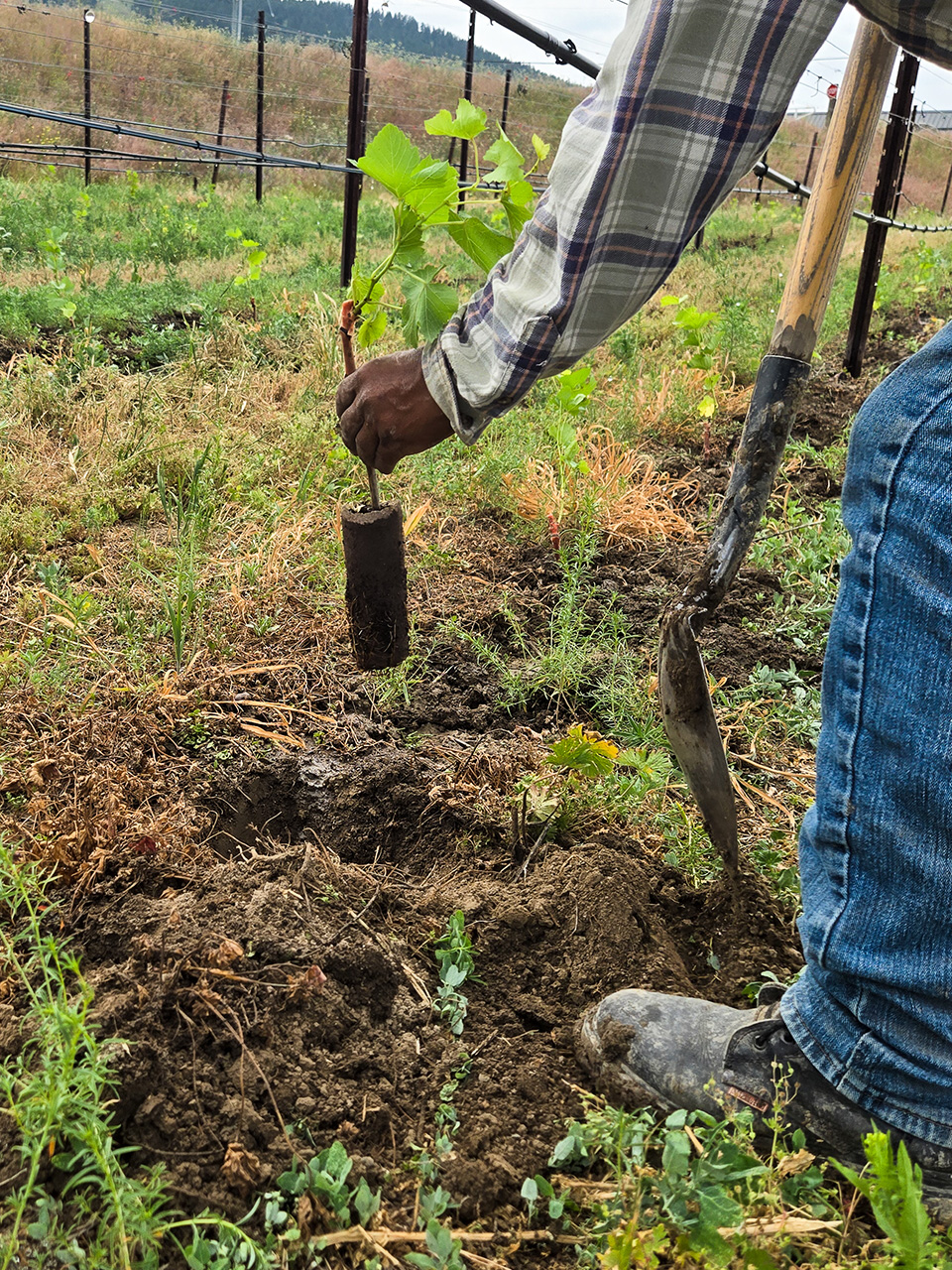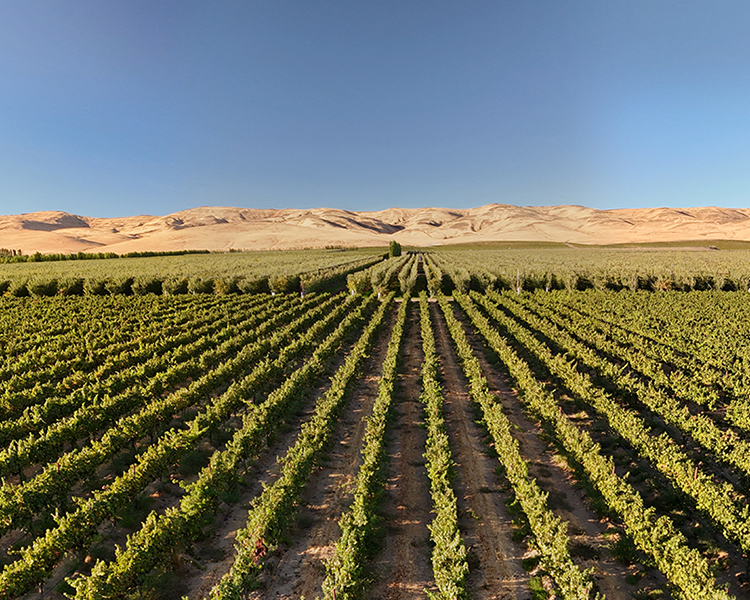Our Take on Chimera Genetics
In 2022, we harvested our largest crop of Pinot Gris to date due to the 22-acre expansion planted by the Holler family over the last 2.5 years. While walking the vineyards, we noticed more genetic variation in the grapes than prior years. This variation is known as chimera mutation. Chimera mutation demonstrates the relationship between all Pinot varieties – Pinot Gris, Pinot Blanc and Pinot Noir and because of the natural ebb and flow of the vineyard, we are becoming more aware of it.
From our experience, the chimera mutation is seen to mutate Pinot Gris to Pinot Blanc in a hotter, drier climate whereas in cooler temperate soils the Pinot Gris mutates to Pinot Noir. In the first photo, we have one bunch that is mostly Pinot Gris but has partially mutated back to Pinot Blanc. On the right side of the cluster, you can see one grape that is half of each. The reasoning for this is still being discovered, what we know from our vineyards is that these genetic mutations happen because of the interaction between soil, temperature (both hot and cold), aspect, and overall stress on the vine. The second photo shows each varietal starting from left to right – Pinot Blanc, Pinot Gris, Pinot Noir.
Does this mean that the Poplar Grove Pinot Gris is not a single varietal wine?
Less than 2% of our plants are affected and the mutation does not compromise any overall flavour or quality. We do like to think that this makes our Pinot Gris just a little extra special as we believe in embracing the natural ebb and flow rather than fighting the natural happenings in our vineyards




